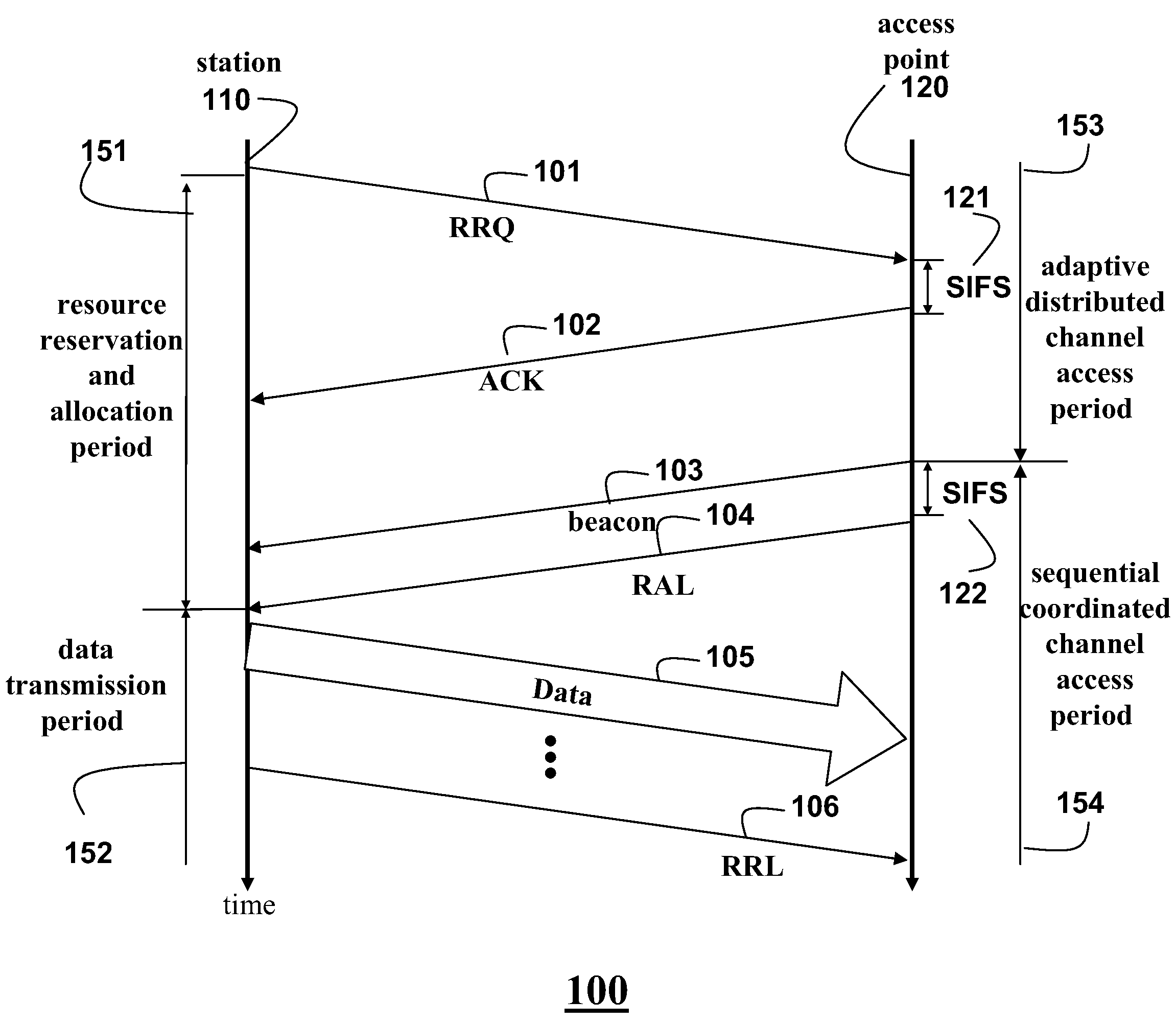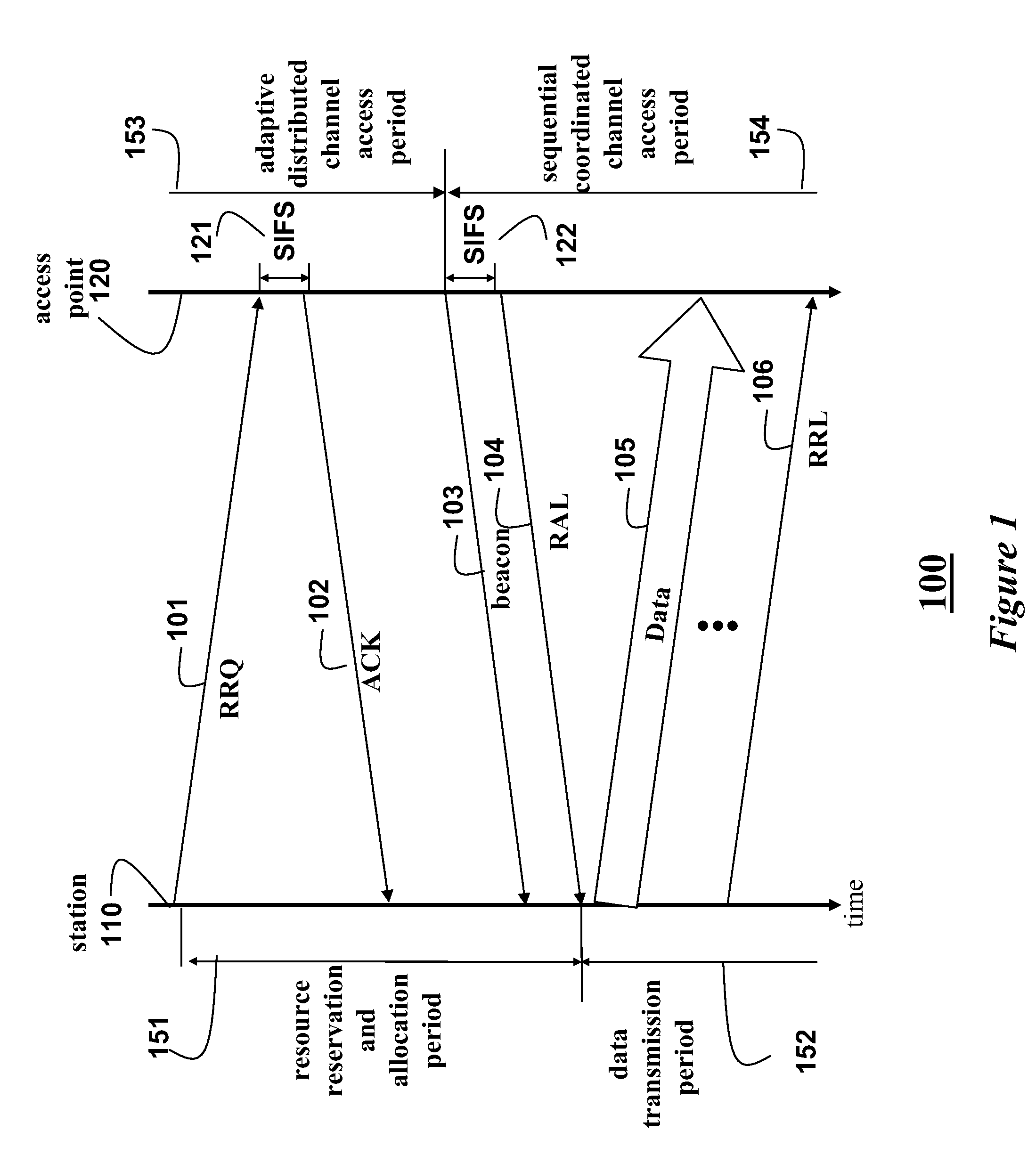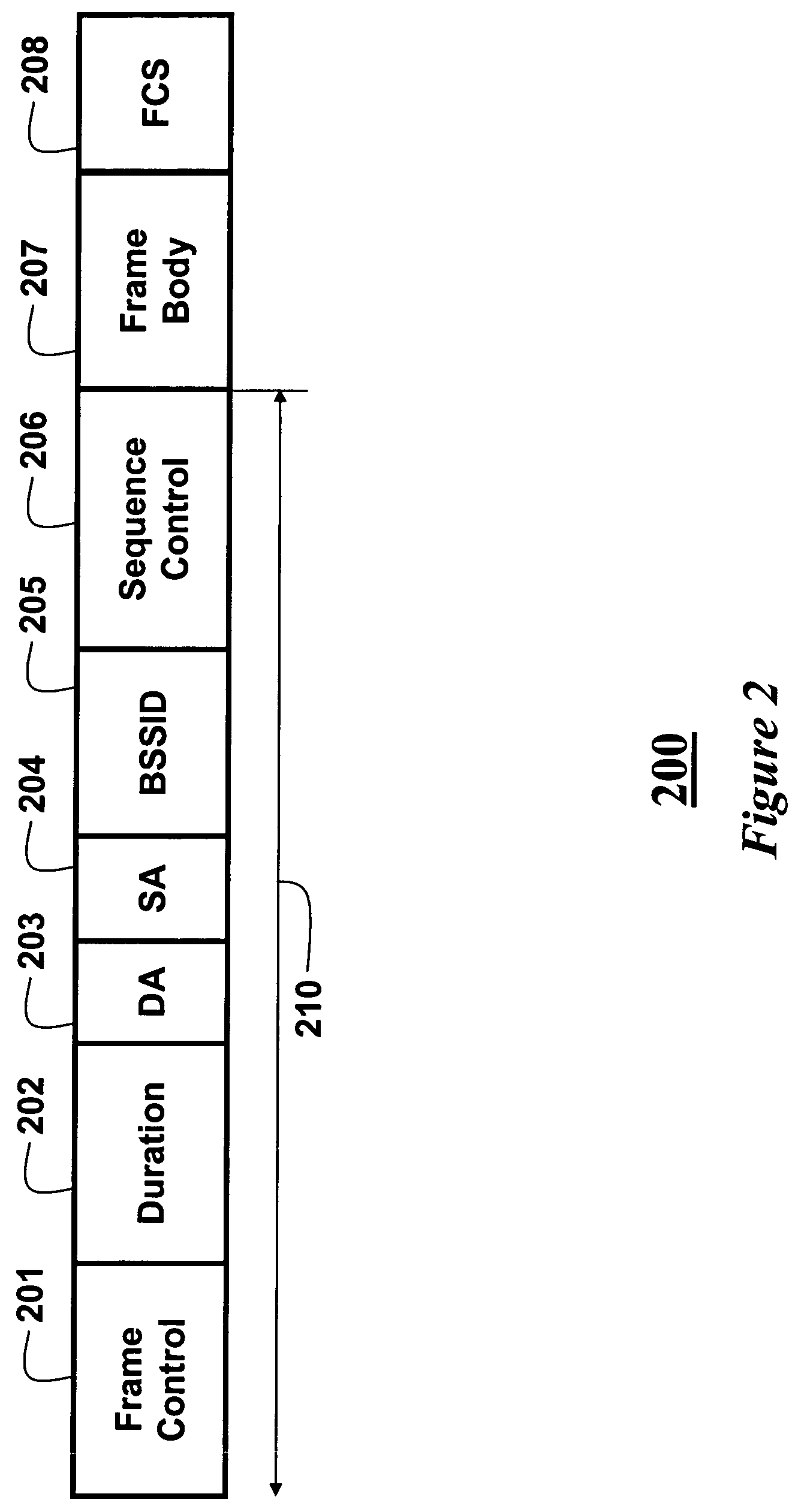Signaling in a wireless network with sequential coordinated channel access
a wireless network and channel access technology, applied in the field of access control and signaling in wireless local area networks, can solve the problems of high signaling overhead, deterioration of throughput, and strict, fine-grained time synchronization of tdma-based methods, so as to achieve more powerful and efficient, maintain simplicity and backward compatibility, and provide extensibility and flexibility
- Summary
- Abstract
- Description
- Claims
- Application Information
AI Technical Summary
Benefits of technology
Problems solved by technology
Method used
Image
Examples
Embodiment Construction
[0031]The invention provides a signaling method for a wireless network that uses SCCA as described in U.S. patent application Ser. No. 10 / 888,398, “Sequential Coordinated Channel Access in Wireless Networks,” filed on Jul. 9, 2004, by Yuan et al., incorporated herein by reference in its entirety.
[0032]The signaling method for the SCCA method includes the following procedures: resource reservation, resource allocation, resource renegotiation, and resource relinquishment.
[0033]Signaling Method
[0034]As shown in FIG. 1, a resource management method 100 includes a station (STA) 110 having a resource reservation and allocation period 151, and a data transmission period 152. An access point (AP) 120 has an adaptive distributed channel access (ADCA) period 153, and a sequential coordinated channel access (SCCA) period 154. In FIG. 1, time increases from top to bottom.
[0035]Resource Reservation
[0036]To request bandwidth, the station 110 sends a resource request message (RRQ) 101 to the AP 12...
PUM
 Login to View More
Login to View More Abstract
Description
Claims
Application Information
 Login to View More
Login to View More - R&D
- Intellectual Property
- Life Sciences
- Materials
- Tech Scout
- Unparalleled Data Quality
- Higher Quality Content
- 60% Fewer Hallucinations
Browse by: Latest US Patents, China's latest patents, Technical Efficacy Thesaurus, Application Domain, Technology Topic, Popular Technical Reports.
© 2025 PatSnap. All rights reserved.Legal|Privacy policy|Modern Slavery Act Transparency Statement|Sitemap|About US| Contact US: help@patsnap.com



